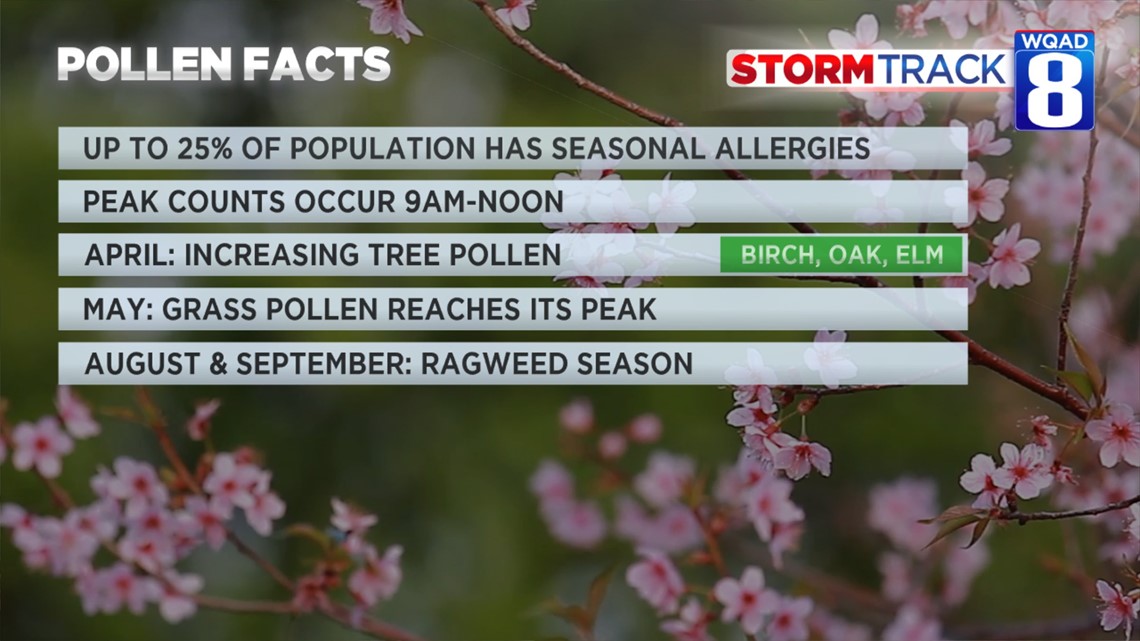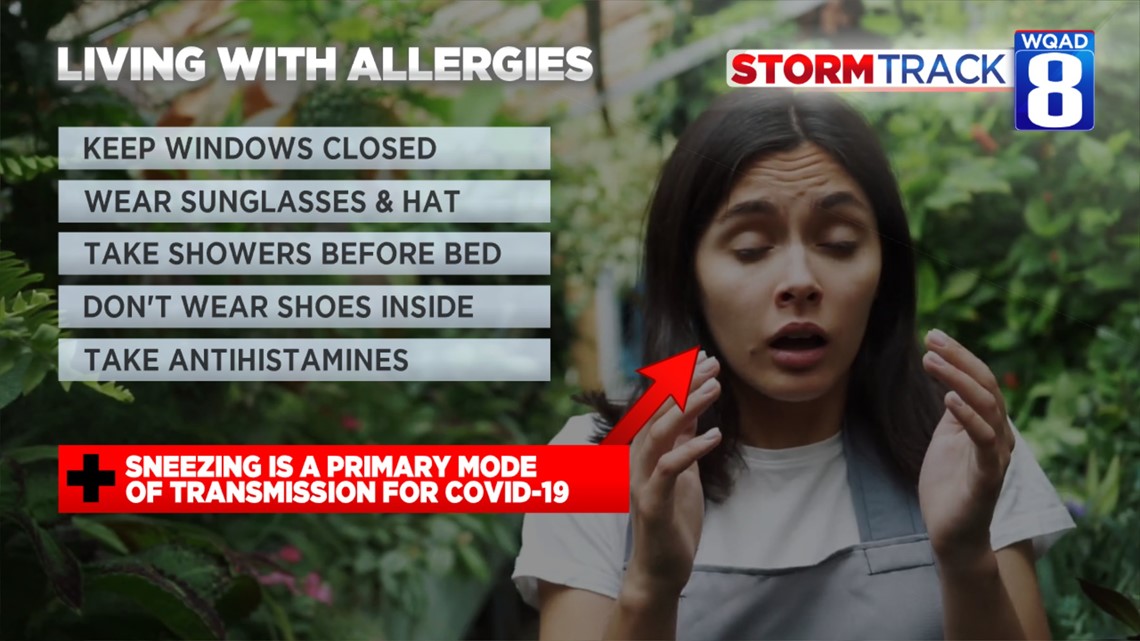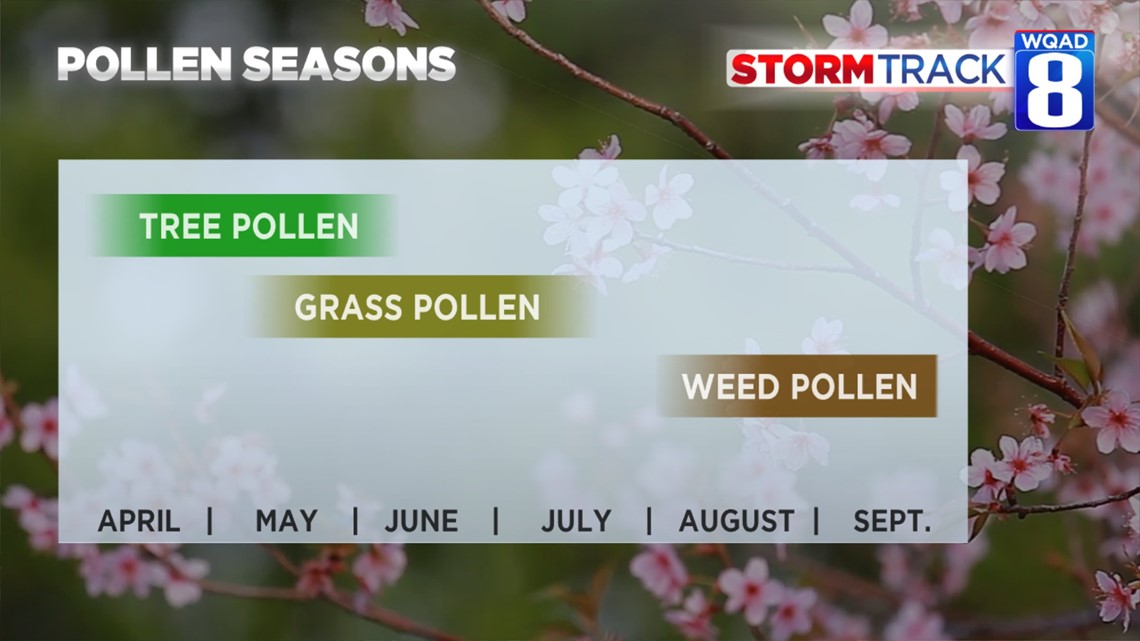If you suffer from allergies, get ready for an intense pollen season! Up to 25% of the U.S. population deals with the effects of seasonal allergies. With high levels of mold spores and pollen grains comes itchy, watery eyes, hives, and even shortness of breath!
In April, the Midwest sees its first spike of pollen in the air as the first bouts of warm weather cause plants to bloom. Flowers and trees seem to “pop” with blooms in the first few weeks of April. But it’s not flowers that bring the biggest problems for most sufferers. According to Dr. Amber Patterson, M.D., flowers are typically pollinated by insects and their pollen isn’t taken to the air.
Trees are a different story as they are pollinated by the wind. Tree pollen is typically finer than other types and can travel for miles.


People with allergies to tree pollen assume that trees that produce flowers (like apple and cherry trees) trigger the worst symptoms. In fact, the pollen with these types of trees is stickier and heavier than others…and don’t blow freely in the wind.
Warm, windy days are the worst for pollen as the dry air tends to keep pollen aloft longer.
Those with seasonal allergies are encouraged to pass on the fruits and vegetables. Now I’m not a doctor, but the science is in and if you’re like me and have an allergy to birch pollen, you might become allergic to almonds, apples, carrots, cherries, peaches, plums, and even raw potatoes!
Tree pollen begins in April and peaks in our area in May.
Grass pollen becomes the dominant allergen in June and lasts into early September.
The pollen that brings the worst symptoms to the most people is weed pollen. Weed pollen is very jagged in shape and has the ability to stick to the inside of our sinuses. Ragweed is especially prevalent come August, and lasts until the first frost in September.
If you live in a wooded area, chances are you’re going to be more susceptible to seasonal allergies. When trees are in your own backyard, it could expose you to several times as much pollen as a tree down the street.


So what can you do? According to the Asthma and Allergy Foundation of America, here are some tips:
1. Keeping windows closed on high pollen days can reduce the amounts in your indoor air.
2. Wearing sunglasses and a hat can offer a barrier between the pollen and your eyes and nose.
3. If you take showers before bed, you'll wash off any of the pollen that could have come in contact with your skin.
4. Not wearing shoes inside your home will keep pollen outside.
5. Take antihistamines before you feel symptoms.
Air conditioning can also lower the amounts of pollen in the air. Even though it’s not hot outside, it may be an idea to reduce indoor pollution.
Oh! Indoor pollution isn’t something we’ve talked about yet. That typically peaks in the Fall and Winter. Mold spores also peak in the Fall. That’s a topic in three months.


Stay safe and share your pollen allergies with me on my Facebook page.
-Meteorologist Eric Sorensen

